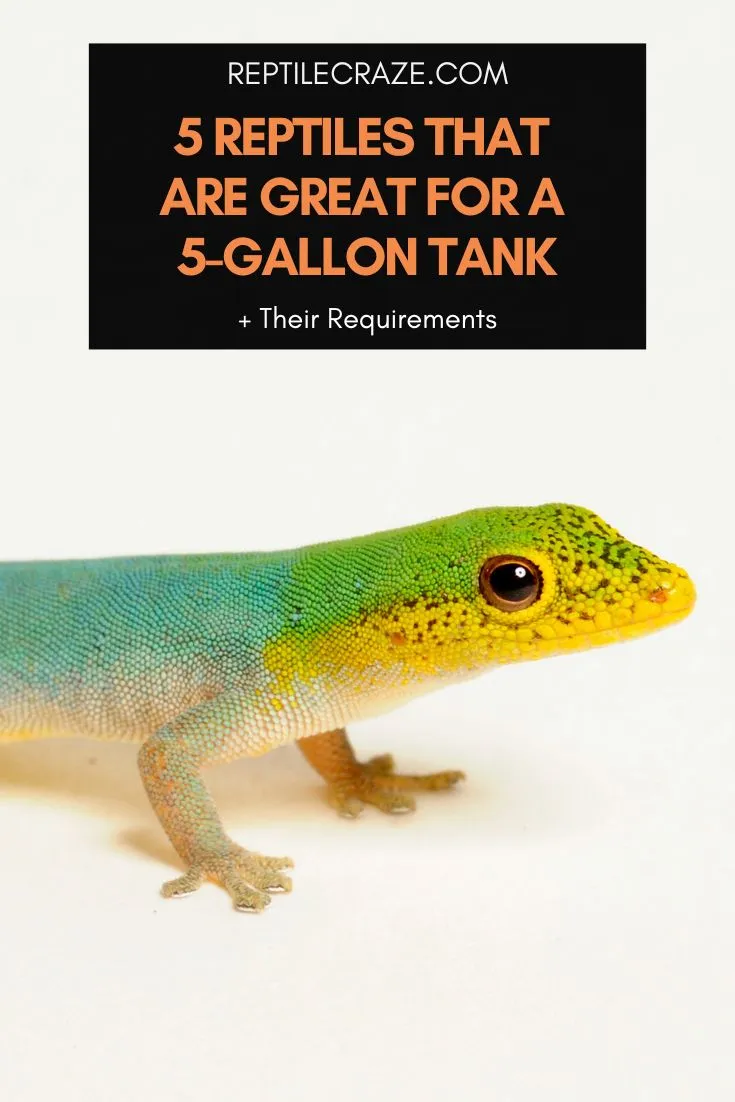
Five gallons may sound like a lot as a liquid measure, but it’s pretty small in terms of
So, the million-dollar question is, what reptiles can easily live in a 5-gallon
- Cameroon Dwarf Gecko
- Antilles Dwarf Gecko
- William’s Dwarf Gecko
- Pygmy Panther Gecko
- Pygmy Chameleon
Being a reptile parent isn’t too complicated, but you’re often bombarded with information. If you’re hoping to avoid the hassle of internet searches, we’ve got good news. This article will give you an easy-to-understand overview of how to set up a
Table of Contents
Reptiles For A 5-Gallon Tank
We know what you’re thinking. How is it possible to shelter reptiles in tanks generally used for single-species settings, like a Betta
For most reptiles, the golden rule for setting up a vivarium is – the larger the
And most small adult geckos require tanks with minimal dimensions of 12x12x18 inches.
Nonetheless, the advantage Dwarf or Pygmy geckos bring to the table is that they’re much smaller than their average counterparts.
Even though nano tanks typically measure 16x8x10 inches, they can easily house a single dwarf or pygmy species.
You can also upgrade your
1. Cameroon Dwarf Gecko
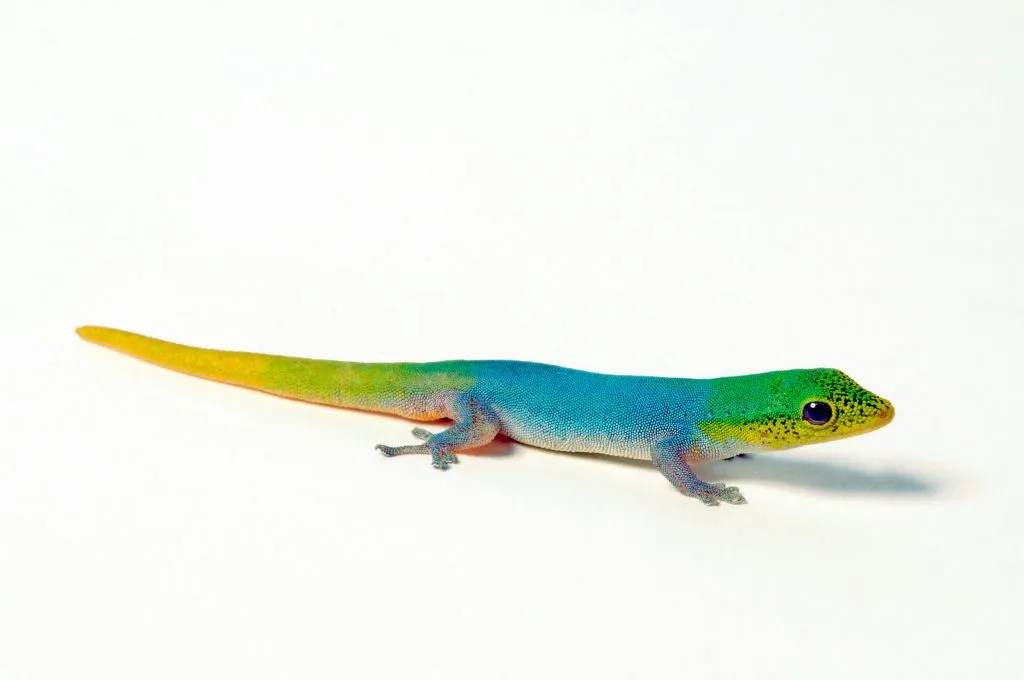
Hailing from Cameroon and its surrounding countries, the Cameroon Dwarf Gecko (Lygodactylus conraui) is also fairly reputed for its beautiful coloring and markings.
The Cameroon Gecko makes for a very pretty sight with a yellow head and tail, a blue body, and circular markings running down the sides of its back.
Considering the fact that a Cameroon gecko never exceeds the entire length of 2-2.5 inches, you would think that it would be fine in a little
A comfortable environment for a Cameroon Gecko should include climbing areas, hiding spots, and room to maneuver.
They come from habitats with lots of biodiversities, so the more plant life you have in the terrarium, the happier your pet will be.
Naturally, you also need to provide your reptile with basking areas and separate spaces for
Yet, for a single hatchling or a juvenile Cameron Gecko, a 5-gallon
2. Antilles Dwarf Gecko

The Antilles Dwarf Gecko (Gonatodes antillensis) is native to islands like Curacao and Aruba. Males of the species are beige when young but develop a bright yellow hue on their heads and grey bodies when they mature. The females, on the other hand, develop brown bands and mottling.
These geckos are pretty territorial, so housing a single specimen is ideal. They require a quick-drying substrate, leaf litter, and rock crevices (as hiding spaces).
They’re also expert escape artists, which is why their enclosures should have secure lids. Any heavy objects, like driftwood or rocks, should be secured to ensure they’re not crushed.
The species enjoy warm temperatures ranging from 75-85F and 50-60% humidity. They don’t require UV lighting but need basking spots. These geckos measure about 2.7 inches as adults and will do well in a 5-gallon
Tip: Interested in reptiles for bigger tanks? Have a look at our articles on reptiles for 10-Gallon, 20-Gallon, 30-Gallon, 40-Gallon, 55-Gallon, 75-Gallon, 100-Gallon tanks, and 120-Gallon tanks.
3. William’s Dwarf Gecko
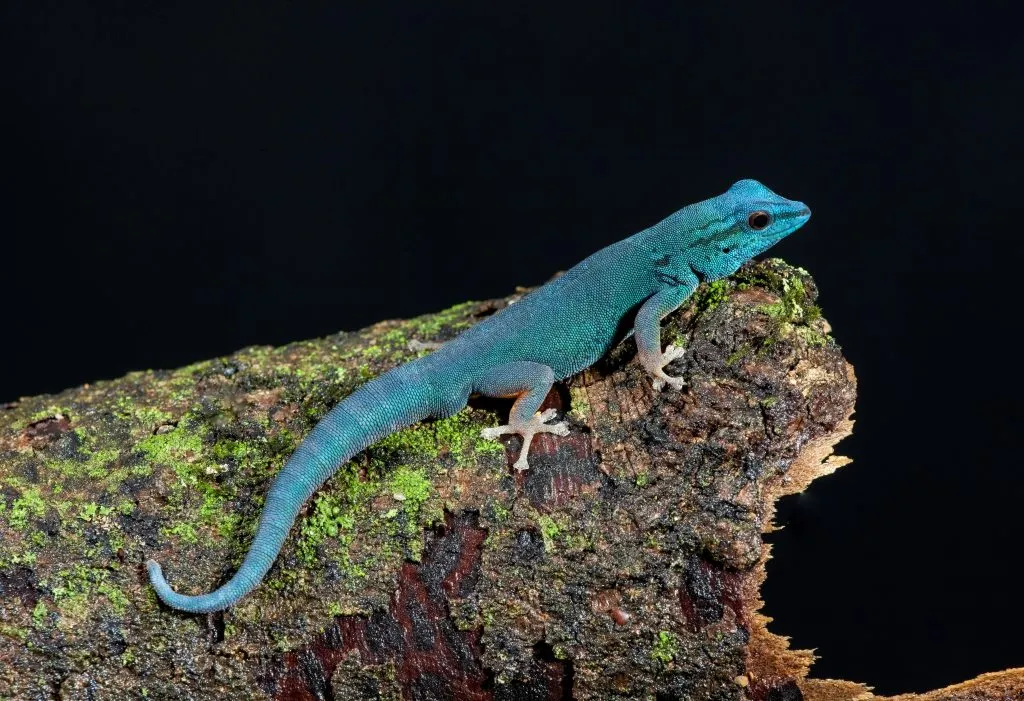
The William’s Dwarf Gecko (aka Electric Blue Day Gecko or Lygodactylus williamsi) is a fantastic little creature.
With its striking blue color and exotic background from Tanzania, Africa, the Blue Day is a truly spectacular sight.
But, it’s only the adult male that takes on the vibrant blue coloring. The females are usually a green, coppery color.
These reptiles have only shortly become known to enthusiasts. There is very little awareness of their captive-bred requirements or the breed itself.
However, once you look at them, it’s hardly a wonder that they’ve gained such popularity.
The Electric Blue Day Geckos are minute as hatchlings. And, as full-grown adults, they only grow to a maximum size of 3 inches. The females are even smaller.
That’s minuscule, for sure. However, these little reptiles still need ample space and a bioactive setup.
Their tanks require vertical plants where they can climb. They need separate basking areas where they can cool down or warm up. And they need plenty of light and UV.
Electric Blue Day Geckos must have lots of hiding spots inside their vivarium where they can go to unwind or sleep.
In short, you can house a single Electric Blue Day Gecko in a 5-gallon
But once your Blue Day Gecko crosses the six-month mark, it will start transitioning into an adult. From that point on, investing in a 10-gallon
4. Pygmy Panther Gecko
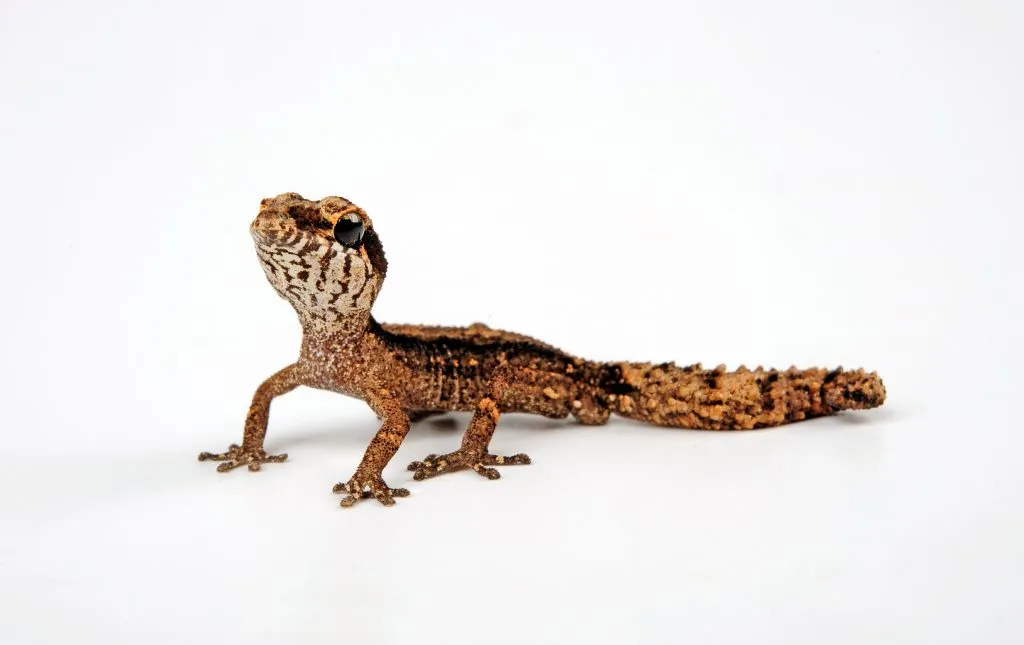
Pygmy Panther Geckos (Paroedura androyensis) aren’t famous for their looks. These reptiles, as the name suggests, are minute in size.
But they are by no means without talent. You see, the Pygmy Panthers are miniature killers of their habitat.
The Pygmy Panther is brown primarily from head to tail, with a few large spots or bands at their backs. But these geckos will keep you entertained for hours with their antics – tail wagging, camouflaging, and hunting capabilities.
In short, they need you to give them live insects to hunt and eat. And you need to provide them with room to bask and hide.
Males of the species are pretty territorial and should be housed alone. Females can be
These reptiles don’t grow beyond 5.7 inches, so recreating a habitat that mimics their native environment isn’t too challenging. They do well with bioactive substrates, leaf litter, crevices for hiding spots, and live plants.
5. Pygmy Chameleons
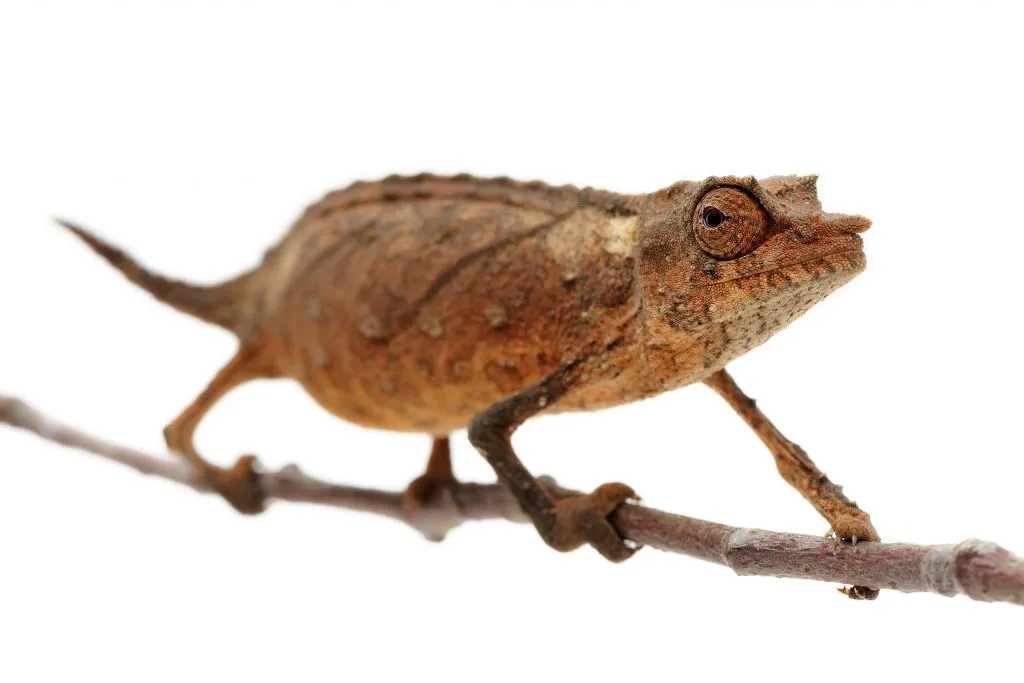
- Bearded Pygmy Chameleon (Rieppeleon brevicaudatus)
- Usambara Pitted Pygmy Chameleon (Rhampholeon temporalis)
- Spectral Pygmy Chameleon (Rhampholeon spectrum)
Pygmy Chameleons aren’t as brightly colored as their larger relatives but make exciting pets nonetheless. These reptiles have truncated tails and are typically available in brown, red, or green shades.
Adults of the species can reach three inches in length, but they’re not big on climbing. That means a single Pygmy Chameleon can comfortably be housed in a 5-gallon

Any
While these lizards are floor-dwellers, they prefer being surrounded by plants. You can opt for live plants like croton or golden pothos to give them areas to explore.
They do well with coconut substrate or bedding and don’t require any UVB lighting. Their temperature needs range from 65-80F and 60-80% humidity.
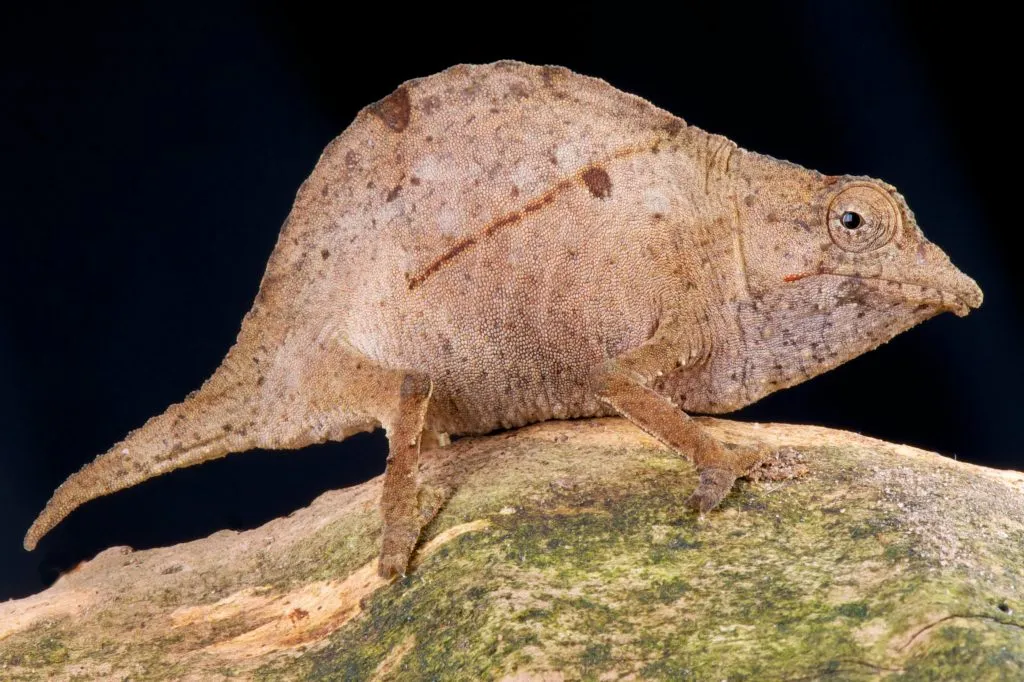
Conclusion
We’ve reached the end of another exciting reptile guide. And we sincerely hope we’ve been able to provide prospective reptile owners with plenty of exciting options, even if they’re short on space.
But, even though the reptile species we’ve mentioned are tiny, they have unique care needs. You’ll need to put your best foot forward to ensure your pet lives a long and healthy life.
- Enchi Ball Python: A Unique and Stunning Morph of Python regius - March 27, 2025
- Emerald Tree Monitor: The Enigmatic Green Guardian of the Rainforest - March 26, 2025
- The Egyptian Cobra (Naja haje): A Fascinating Serpent - March 25, 2025
